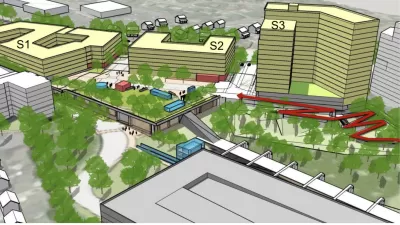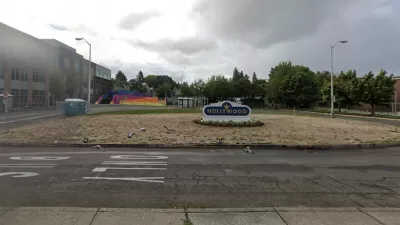According to the Streetsblog, one of the most transit-rich states in the country squanders the potential benefits of its infrastructure by surrounding stations with sprawling residential communities.
According to an article by Tanya Snyder, "too many of New Jersey’s transit stations are surrounded by single-family housing, severely limiting the number of people — especially low-income people — with convenient, walkable access to transit. Some entire transit lines are out of reach for people of modest means."
That conclusion arises from the research of New Jersey Future, which recently produced a report titled "Off Track? An Assessment of Mixed-Income Housing Around New Jersey’s Transit Stations" that examines "the neighborhoods around all 244 of the state’s rail transit stations, commuter ferry docks, and major bus terminals to get a sense of whether transit access is equitably distributed among residents."
The report finds that percentages of single-family detached housing surpassed statewide averages at 109 of the 244 stations. Snyder's conclusion based on those facts: "New Jersey’s transit abundance is going to waste…" The waste is also noteworthy, according to Snyder, in light of the state's trouble conforming with the affordable housing mandates.
FULL STORY: New Jersey Squanders Transit By Surrounding Stations With Sprawl

Americans May Be Stuck — But Why?
Americans are moving a lot less than they once did, and that is a problem. While Yoni Applebaum, in his highly-publicized article Stuck, gets the reasons badly wrong, it's still important to ask: why are we moving so much less than before?

Study: Maui’s Plan to Convert Vacation Rentals to Long-Term Housing Could Cause Nearly $1 Billion Economic Loss
The plan would reduce visitor accommodation by 25,% resulting in 1,900 jobs lost.

Placekeeping: Setting a New Precedent for City Planners
How a preservation-based approach to redevelopment and urban design can prevent displacement and honor legacy communities.

San Diego Swaps Parking Lane for Kid-Friendly Mini Park
The block-long greenway will feature interactive play equipment and landscaping.

Tracking the Invisible: Methane Leaks From LA’s Neighborhood Oil Sites
Environmental advocates are using infrared technology to monitor and document methane leaks from neighborhood oil sites, filling regulatory gaps and pushing for stronger protections to safeguard community health and the climate.

Montana Bill Promotes Parking Reform
A bill before the Montana state senate would bar cities from requiring more than one parking spot per new housing unit.
Urban Design for Planners 1: Software Tools
This six-course series explores essential urban design concepts using open source software and equips planners with the tools they need to participate fully in the urban design process.
Planning for Universal Design
Learn the tools for implementing Universal Design in planning regulations.
Caltrans
Heyer Gruel & Associates PA
Institute for Housing and Urban Development Studies (IHS)
City of Grandview
Harvard GSD Executive Education
Salt Lake City
NYU Wagner Graduate School of Public Service
City of Cambridge, Maryland




























